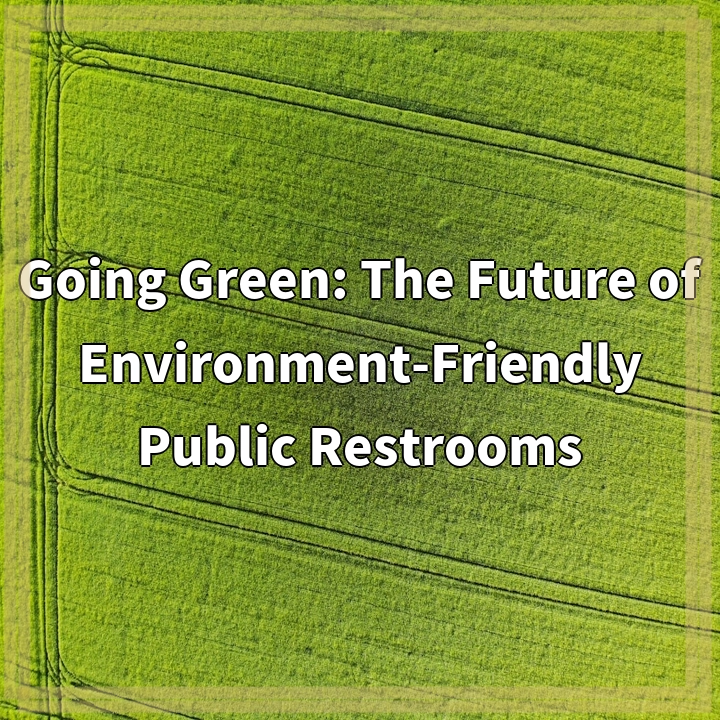
What it is:
Public restrooms are a necessary convenience in our daily lives, but they often come at a high cost to the environment. However, a growing movement is focusing on creating environment-friendly public restrooms that minimize their ecological footprint. These sustainable restrooms not only reduce water and energy consumption but also incorporate environmentally friendly materials and waste management practices. The future of public restrooms lies in embracing these eco-friendly innovations to promote a greener and more sustainable society.
Real-World Problems:
Excessive Water Consumption:
Traditional public restrooms are notorious for their excessive water consumption. Flushing toilets and running faucets contribute to a significant amount of water waste each year. This not only depletes freshwater resources but also increases water bills and puts a strain on local water infrastructure. Environment-friendly public restrooms aim to address this issue by incorporating water-saving technologies such as low-flow toilets, faucets with motion sensors, and efficient irrigation systems for landscaping.
High Energy Consumption:
Another significant environmental problem associated with public restrooms is the high energy consumption. Traditional restroom facilities rely heavily on artificial lighting, ventilation systems, and heating or cooling mechanisms. This increases electricity usage and contributes to greenhouse gas emissions. Environment-friendly restrooms utilize energy-efficient lighting systems, natural ventilation methods, and renewable energy sources like solar panels to minimize energy consumption and reduce their carbon footprint.
Poor Waste Management:
Inadequate waste management practices in public restrooms can have detrimental effects on the environment. Improper disposal of paper towels, non-biodegradable hygiene products, and chemicals from cleaning agents can lead to pollution and harm local ecosystems. Environment-friendly public restrooms prioritize waste reduction and proper disposal by using compostable or recycled materials, installing recycling bins, and employing eco-friendly cleaning products.
Lack of Accessibility:
Public restrooms often fail to cater to the needs of all users, including those with disabilities or special requirements. Accessibility is a crucial aspect that needs to be addressed in environment-friendly public restrooms. This includes designing accessible entryways, installing grab bars and handrails, providing spacious and well-equipped accessible stalls, and ensuring proper signage for people with visual impairments. By making restrooms more inclusive, we can create a more equitable and sustainable society.
Awareness and Funding:
One significant challenge to the implementation of environment-friendly public restrooms is the lack of awareness and funding. Many municipalities and organizations may not be aware of the benefits and potential cost savings associated with sustainable restroom solutions. Additionally, the initial investment required for retrofitting or constructing eco-friendly restrooms can be a barrier. Creating awareness and securing funding through government initiatives, grants, or partnerships can help overcome these challenges and drive the adoption of environment-friendly public restroom practices.

Solutions to Environment-Friendly Public Restrooms:
Water Conservation:
To address the problem of excessive water consumption, environment-friendly public restrooms implement water-saving technologies. This includes installing low-flow toilets and faucets with motion sensors to reduce water usage. Implementing efficient irrigation systems for landscaping further minimizes water waste and promotes sustainable water management practices.
Energy Efficiency:
To tackle the issue of high energy consumption, sustainable public restrooms prioritize energy-efficient solutions. This involves utilizing LED lighting systems and natural ventilation methods to minimize electricity usage. Additionally, integrating renewable energy sources like solar panels helps to offset energy needs, reducing reliance on traditional power grids and decreasing carbon emissions.
Effective Waste Management:
Environment-friendly public restrooms focus on proper waste management practices. This involves promoting the use of compostable or recycled materials, including biodegradable hygiene products. Installing recycling bins and using eco-friendly cleaning products reduces waste and minimizes environmental pollution. Implementing clear signage for waste segregation further enhances waste management efforts.
Accessibility and Inclusivity:
To ensure that public restrooms cater to the needs of all individuals, environment-friendly solutions prioritize accessibility and inclusivity. This includes designing accessible entryways, installing amenities such as grab bars and handrails, and providing spacious and well-equipped accessible stalls. Proper signage and consideration for individuals with visual impairments also contribute to creating inclusive restroom facilities.
Awareness and Funding:
To overcome the challenges associated with implementing environment-friendly public restrooms, creating awareness and securing funding are crucial. Governments, municipalities, and organizations need to be educated about the environmental and cost-saving benefits of sustainable restroom solutions. This can be achieved through awareness campaigns, sharing success stories, and providing resources to guide the retrofitting or construction of eco-friendly restrooms. Seeking funding through government initiatives, grants, or partnerships will also drive the adoption of environment-friendly practices.















